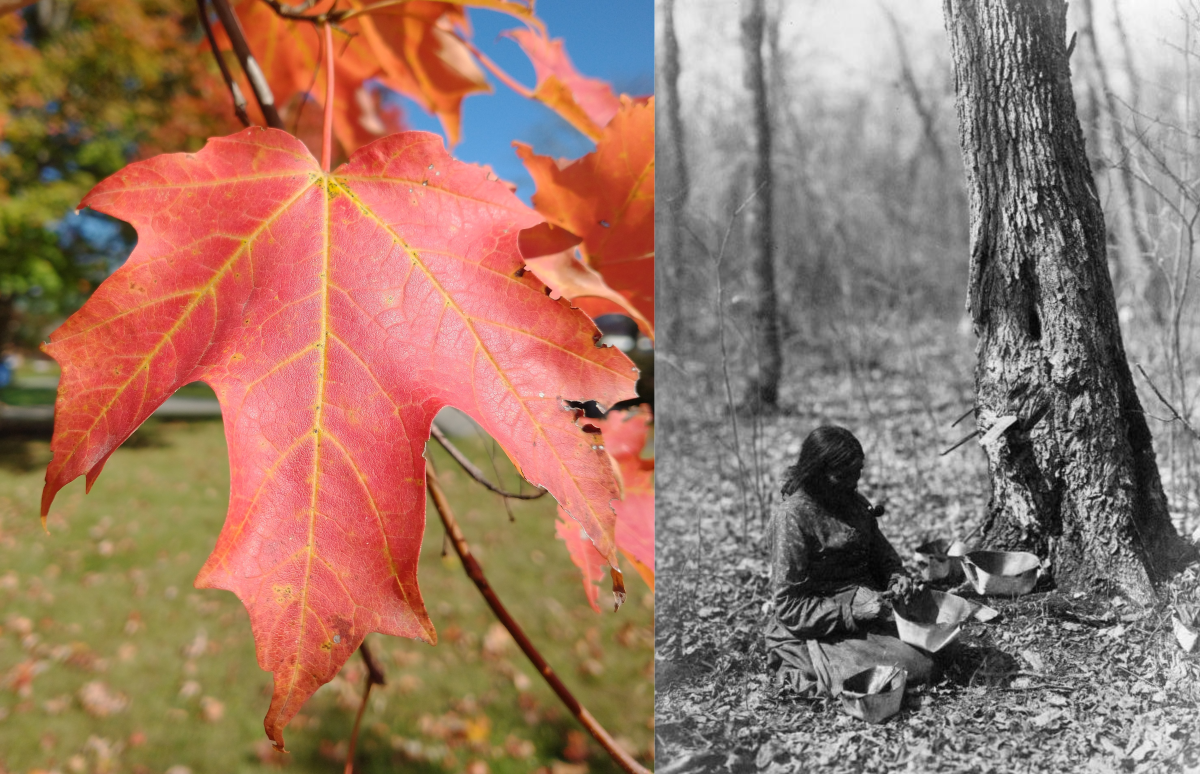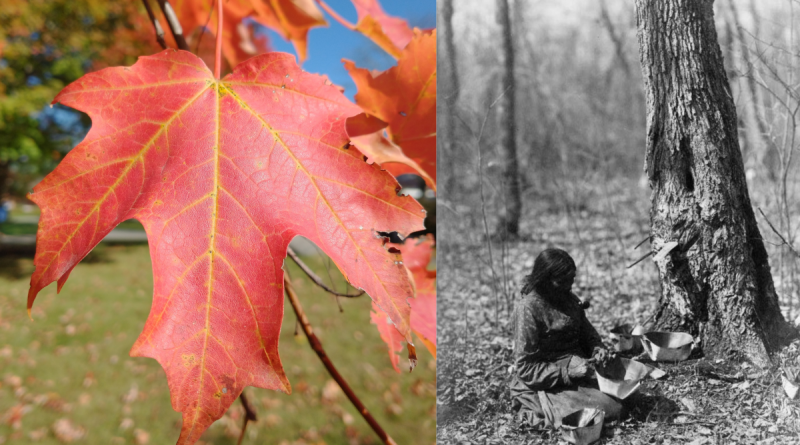February Biodiversity Duo of the Month: Sugar maple trees and us!

The Biodiversity of SUNY New Paltz project’s February 2025 Duo of the Month are two organisms that may be familiar to all of us on campus: sugar maple trees and our very own species of human beings, or Homo sapiens.
Sugar maples, or Acer saccharum, are trees native to northeastern North America. These trees can be identified by their opposite leaf arrangement and the hand-like lobes and veins of their leaves. The common name of this species refers to the sugar content of its sap; sugar maple sap is sweeter than that of other trees, including other species of maple trees.
There are a number of large sugar maples to see on campus, including some in the Arts & Sciences Quad and Old Main Quad. In the spring and summer, you can enjoy the cool shade under their wide branches; in the fall, you can marvel at the gold, russet or crimson of their fall color.
Throughout history, humans have had diverse uses for and relationships with plants like maple trees. These trees were an important source of sugar calories for the indigenous peoples of northeastern North America.
Maple trees are referred to as the “leader of the trees” in many Native American cultures because they are among the first trees to awaken, heralding the coming spring. These trees are typically tapped in February, when the longer days and slightly warmer afternoons encourage the movement of sugars upwards in the tree from roots to developing buds.
The Lenape and other indigenous people were the first humans to use maple sap to make syrup and dry sugar. The humans of this region had other sources of sugars (serviceberries, strawberries, blueberries and raspberries among them), but none during the long winter. Maple sap and maple sugar were a crucial and delicious source of energy at a difficult time of year. Those who tap maple trees today are part of this long tradition.
To learn more about the incredible biodiversity on campus, watch out for March’s Duo of the Month, visit our Biodiversity of SUNY New Paltz catalogue on iNaturalist.org, and stay tuned for a future campus biodiversity walking tour.

